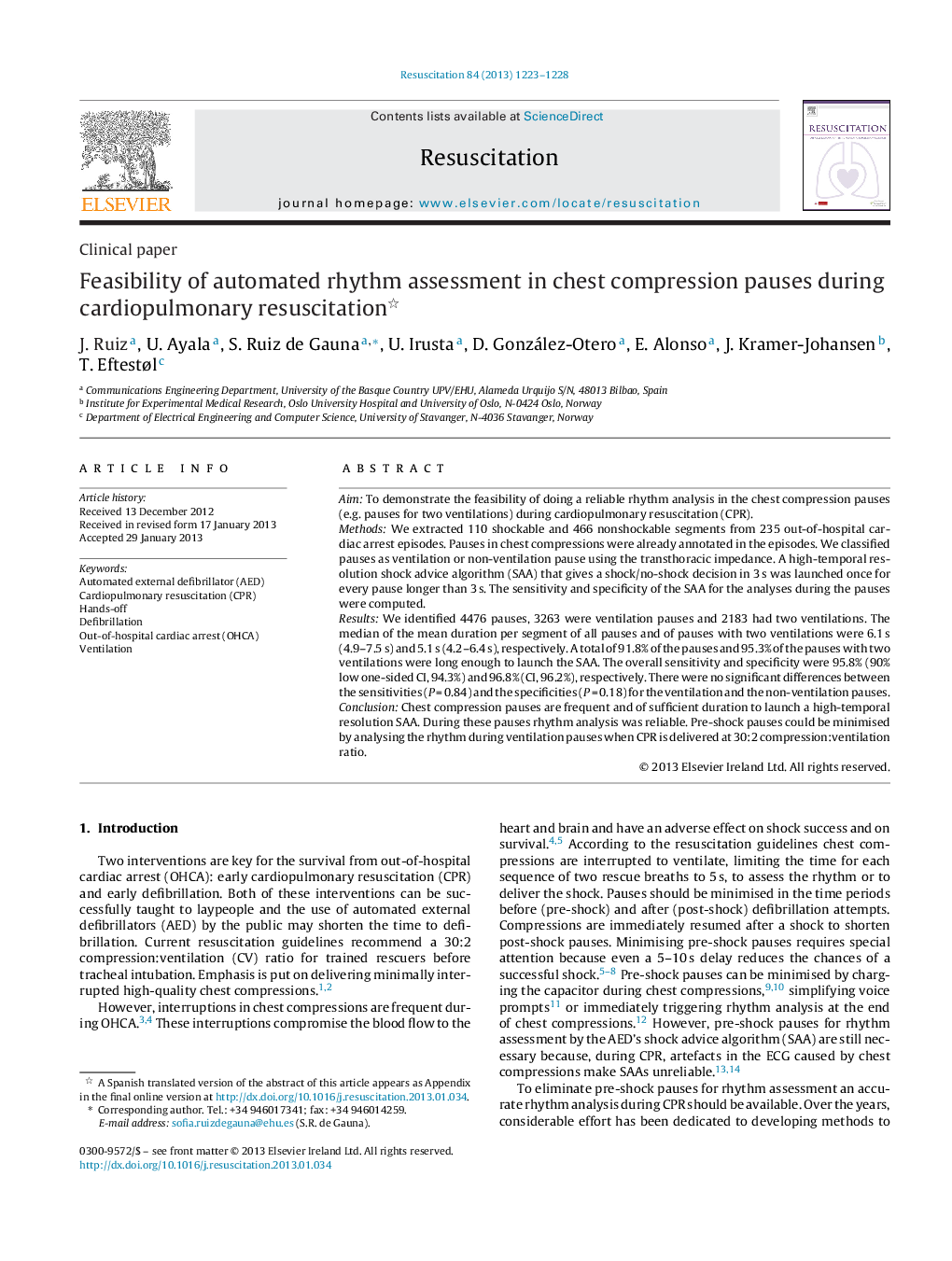| Article ID | Journal | Published Year | Pages | File Type |
|---|---|---|---|---|
| 3008689 | Resuscitation | 2013 | 6 Pages |
AimTo demonstrate the feasibility of doing a reliable rhythm analysis in the chest compression pauses (e.g. pauses for two ventilations) during cardiopulmonary resuscitation (CPR).MethodsWe extracted 110 shockable and 466 nonshockable segments from 235 out-of-hospital cardiac arrest episodes. Pauses in chest compressions were already annotated in the episodes. We classified pauses as ventilation or non-ventilation pause using the transthoracic impedance. A high-temporal resolution shock advice algorithm (SAA) that gives a shock/no-shock decision in 3 s was launched once for every pause longer than 3 s. The sensitivity and specificity of the SAA for the analyses during the pauses were computed.ResultsWe identified 4476 pauses, 3263 were ventilation pauses and 2183 had two ventilations. The median of the mean duration per segment of all pauses and of pauses with two ventilations were 6.1 s (4.9–7.5 s) and 5.1 s (4.2–6.4 s), respectively. A total of 91.8% of the pauses and 95.3% of the pauses with two ventilations were long enough to launch the SAA. The overall sensitivity and specificity were 95.8% (90% low one-sided CI, 94.3%) and 96.8% (CI, 96.2%), respectively. There were no significant differences between the sensitivities (P = 0.84) and the specificities (P = 0.18) for the ventilation and the non-ventilation pauses.ConclusionChest compression pauses are frequent and of sufficient duration to launch a high-temporal resolution SAA. During these pauses rhythm analysis was reliable. Pre-shock pauses could be minimised by analysing the rhythm during ventilation pauses when CPR is delivered at 30:2 compression:ventilation ratio.
